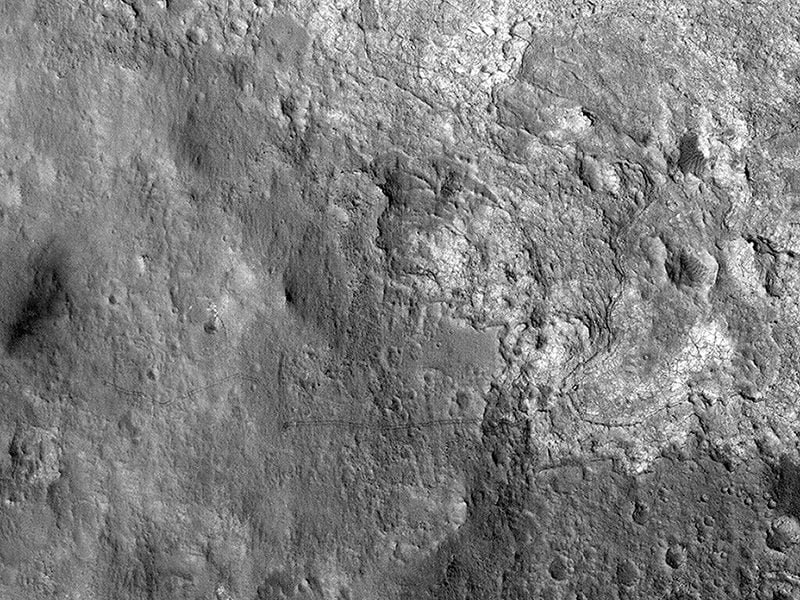Look closely and see where the Curiosity rover has been roving about inside Gale Crater on Mars, from "Bradbury Landing" to its current location in "Yellowknife Bay." This shot was taken by the HiRISE camera on board the Mars Reconnaissance Orbiter on January 2, 2013.
"This image shows the entire distance traveled from the landing site (dark smudge at left) to its location as of 2 January 2013 (the rover is bright feature at right)," wrote HiRISE principal investigator Alfred McEwen on the
HiRISE website
. "The tracks are not seen where the rover has recently driven over the lighter-toned surface, which may be more indurated [hardened] than the darker soil."
You can compare this image to one taken on September 8, 2012 to see how much the rover has driven in Gale Crater:
[caption id="attachment_99475" align="aligncenter" width="573" caption = "Curiosity rover tracks seen from orbit by HiRISE on September 8, 2012. Credit: NASA/JPL/University of Arizona."]
[/caption]
And here's a map of Curiosity's travels that NASA released yesterday:
[caption id="attachment_99476" align="aligncenter" width="580" caption = "This image maps the traverse of NASA's Mars rover Curiosity from "Bradbury Landing" to "Yellowknife Bay," with an inset documenting a change in the ground's thermal properties with arrival at a different type of terrain. Image credit: NASA/JPL-Caltech/Univ. of Arizona/CAB(CSIC-INTA)/FMI."]
[/caption]
Mission scientists said at a briefing yesterday (January 15, 2013) that between Sol (Martian day) 120 and Sol 121 of the mission -- which equates to Dec. 7 and Dec. 8, 2012 -- Curiosity crossed over a terrain boundary into lighter-toned rocks that correspond to high thermal inertia values observed by NASA's Mars Odyssey orbiter. The green dashed line marks the boundary between the terrain types.
The inset graphs the range in ground temperature recorded each day by the Rover Environmental Monitoring Station (REMS) on Curiosity. Note that the arrival onto the lighter-toned terrain corresponds with an abrupt shift in the range of daily ground temperatures to a consistently smaller spread in values. This independently signals the same transition seen from orbit, and marks the arrival at well-exposed, stratified bedrock.
Sol 124 (Dec. 11, 2012) marked the arrival into an area called "Yellowknife Bay," where sulfate-filled veins and concretions were discovered, along with much finer-grained sediments providing evidence of past water interacting with the surface.
Here's the Mars weather report
provided by REMS
for Sol 158 (January 15, 2013):
[caption id="attachment_99477" align="aligncenter" width="495" caption = "Daily Weather Report. Image credit: NASA/JPL-Caltech."]
[/caption]
A video showing the new HiRISE image of Curiosity's tracks:
 Universe Today
Universe Today
